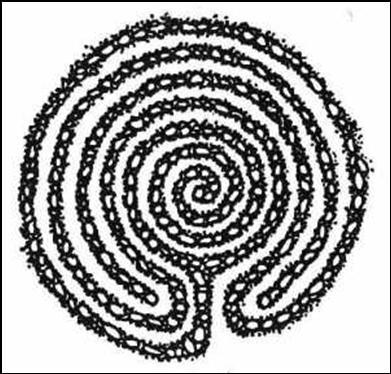




|
Home |
|
Classes |
|
Syllabus / Styles |
|
Biography |
|
Poetry |
|
Photos |
|
Articles |
|
Labyrinths |
|
Storytelling |
|
Artwork |
|
Respects Due |
|
Contact |
|
Links |


|
...with a spirit of self-exploration |

|
Pennine Tai Chi |



|
Labyrinths |
|
Why a page about labyrinths on a Chinese Internal Arts site. At first sight there may appear to be little correlation between the two. However, upon closer investigation, there are in fact some similarities. In ‘Looking for the Golden Needle’, Gerda Geddes looks into the symbolism of the Tai Chi ‘form’ and sees it as representative of a journey through life. Many have taken the symbolism of the labyrinth in the same way. There may be times when learning a Tai Chi form, that we appear to meet sticking points, dead ends, lost in a multicursal maze of movements. However, if we persist, we learn to keep our orientation in time and space, keep our centre. Once learnt, the forms flow through a sequence of movements, in the same way that a unicursal (one path) labyrinth will inevitably take us to the centre. The predominantly circular / spiral nature of labyrinths, reflects well in the rounded movement of the internal arts. This is particularly so in with the circle walking and coiling / spiralling movements of Ba Gua. Each time we walk a labyrinth, it will have a different feel; in a similar way, even when practising a set ‘form’ of movement, each repetition will yield a different experience. The ‘goal’ of a labyrinth usually involves a journey to the middle, where we align our centre with its centre. Practice of the internal arts helps us to explore and find our physical, mental and emotional centre. After reaching the centre of a labyrinth, we follow the path back to the outside world. Similarly, the internal arts involve expressing our inner feeling and intention to make it outwardly manifest. For articles on mazes and labyrinths, click on the following links: For more information on mazes and labyrinths go to the ‘Links Page’. |

|
Chakra-vyuha labyrinth, Cinnakottur, India |

|
Canvas Labyrinth |